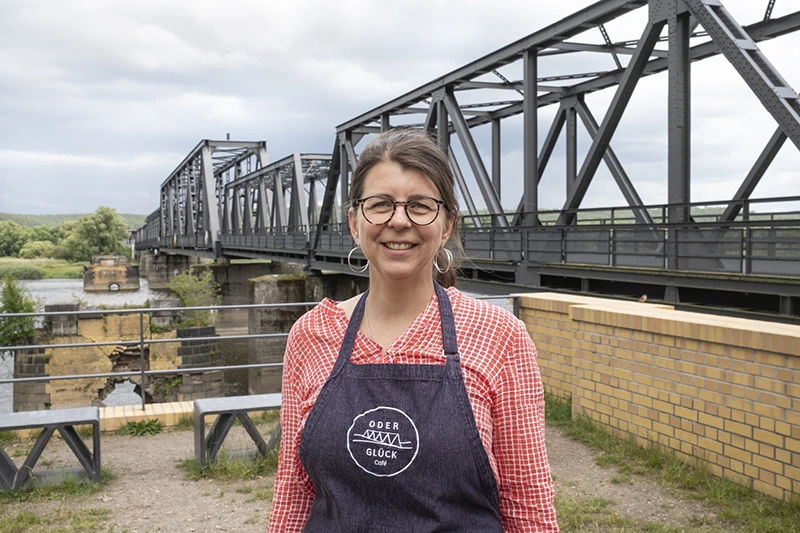
A report by Holger Herschel and Jürgen Danyel
Saturday, October 11, 2025 at 3:00 p.m.
Photographer Holger Herschel and social scientist Jürgen Danyel write about their project: "Bridges create connections, form transitions between landscapes, places and countries, symbolize rapprochement and encounters. In everyday use, they enable people to change sides and banks, thereby creating encounters and neighborhoods. This is particularly true of the bridges along the Oder on the German-Polish border. These bridges each have a very special history, reflecting the history of the difficult German-Polish relationship like a burning glass. They bear traces of war, flight and expulsion, have been destroyed, moved, rebuilt or demolished. They functioned as borders with corresponding rites of passage, lost their function in times of alienation, became changing symbols of enmity, friendship or indifference.
After the end of the Cold War and the collapse of communism, the bridges along the Oder and Neisse rivers became places where the newfound freedom of movement could be celebrated and experienced. Their opening or reopening became a symbol of new connections in the now united Europe.
Beyond their historical and political dimension, the bridges today stand for everyday cross-border mobility, which has become the norm for people in the border region. Hundreds of Polish commuters and tradespeople cross the bridges in Küstrin-Kietz, Frankfurt (Oder) and Hohenwutzen every day. Germans regularly travel to Poland to refuel, shop or visit the hairdresser and doctor. Tourists and vacationers explore the unique river landscape on both sides of the border.
It is astonishing how few new bridges have been built between the two countries since 1990. The only bridge that can really be considered new is the new railroad bridge near Küstrin-Kietz, which was inaugurated on July 31, 2024. But it also replaces an old bridge that had been in use until then, which was put together from various bridge elements after the destruction of the war and became a permanent temporary solution. Symbolically, the Europe Bridge in Neurüdnitz best embodies the new experiential dimension of the German-Polish neighborhood.
The project Bridges. Places of German-Polish neighborhoods is a Photo reportagebridges between Germany and Poland as a Everyday places of exchange, encounter and neighborhood documented. In addition to the bridge buildings as architectural testimonies, this photographic exploration documents above all the everyday life of their use and the various dimensions of neighborhood associated with it. The focus is on photographic portraits of bridge crossers. The portraits are complemented by stories about the everyday crossing of cross-border bridges."
Saturday, October 11, 2025 at 3:00 p.m.
Exhibition: Bridges. Places of German-Polish Neighborhoods
A report by Holger Herschel and Jürgen Danyel at the old fire station in Neurüdnitz.